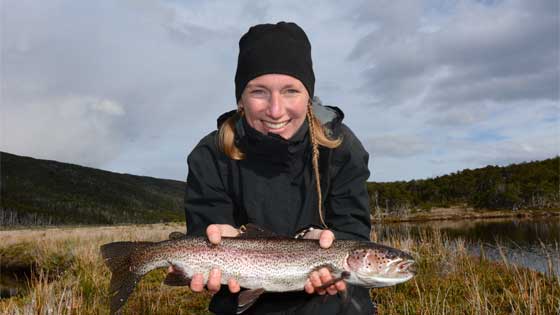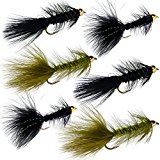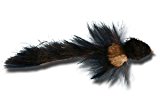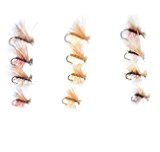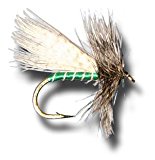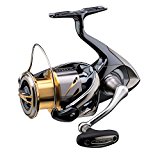Rainbow Trout Night Fishing

What works?
The best parts of the river for night fishing include slow areas just outside of bends where the water is calm as well as the shallows and open flats. Essentially, your standard spots for catching Rainbow Trout.
- Avoid baitcasting and using spinning tackle. While it can work, we’re here to tell you what works best most of the time and will yield better results. At night, that’s fly fishing.
- Use short leaders tapering to the heaviest tippet appropriate for the size of the fly. Avoid leaders longer than 6 inches.
- Dry flies are easier to work with in the limited light. There’s less that can go wrong.
The same flies that work in the day work well at night. For best results, go with caddis or sedge flies. Common brands include Madame X fly and Goofus Bug.
Technique
Let them drift downstream, twitching the line slightly every 10 seconds or so.
- Streamer flies are very successful at night. Use Woolhead Sculpins, Woolly Buggers as well as muddlers in a standard sculpin pattern or marabou.
Tips for Night Fishing
Rainbow Trout can’t see well at night so sudden sounds and movement will scare them away. Night fishing for any fish, including Rainbows, requires us to be quiet and to try and blend into the background.
Light-weight tackle is best.
- Use a small hook with the point of the hook bent outwards
- Use a monofilament 4 to 6 pound test
- The hook size should be between No 6 to 8
Bait is simple. Go with standard earth worms. Avoid the larger worms and don’t place too much on the hook.
Many anglers like to use floats when night fishing. If you’re going to use one make sure it’s very light to the point where it’s barely able to float.
For best results, don’t use a float. The float removes all sensitivity from the line and with it much of the excitement to landing a lunker Rainbow Trout.
Use a small rubber split sinker. Go light and place the sinker about 18 inches from the hook.
The sinker is simply to get the line to the bottom.
How to locate the Rainbow Trout
Finding Rainbow Trout takes a little patience. A fish finder will save you a lots time locating them through the water column.
If you don’t have one, start fishing 15 feet down when fishing the Great Lakes area. Drop down a foot every 15 to 25 minutes. For best results, use two fishing poles to explore the water column quicker.
Other things you should know
1.This might seem counter intuitive. Use a night fishing light that’s capable of floating and can shine straight down over the water where the bait is located. This will help the bait stand out and ensures less time between strikes. Too much light and you’ll scare the fish away. Right away you’ll see small fish gathering. These small bait fish will, of course, attract predator fish like Rainbow Trout.
Most bait shops won’t have these special purpose lights in stock but they can be fabricated from most auto parts, or you can buy a floating fish light here on amazon.
2. The best months to catch Rainbow Trout are July and August. Being summer means they’re usually deeper in the water column, about 15 feet down or deeper. Arrive around 10:30 to 11:00 when the sky is still light and not completely dark.
3. Know your habitat. The day before night fishing, scout out the area where you’ll be fishing. Take notes of areas to avoid. If fishing from land, take notes of places that offer unsafe conditions that should be avoided. If you’re new to the area, jot down GPS co-ordinates for points of interest and places to avoid.
4. Soft glowing lights don’t scare away the fish and make it easy to see what you’re doing.
5. Fishing full moons are much better than new moons. It almost offers enough light to the point where artificial light is not required.
Before setting out to fish, give yourself at least 10 minutes for your eyes to get adjusted.
6. Wear a life jacket even if fishing from the shore or river bank. Accidents can and do happen. Don’t be a statistic.
Click on the links below for best prices on amazon for flies that work well.

